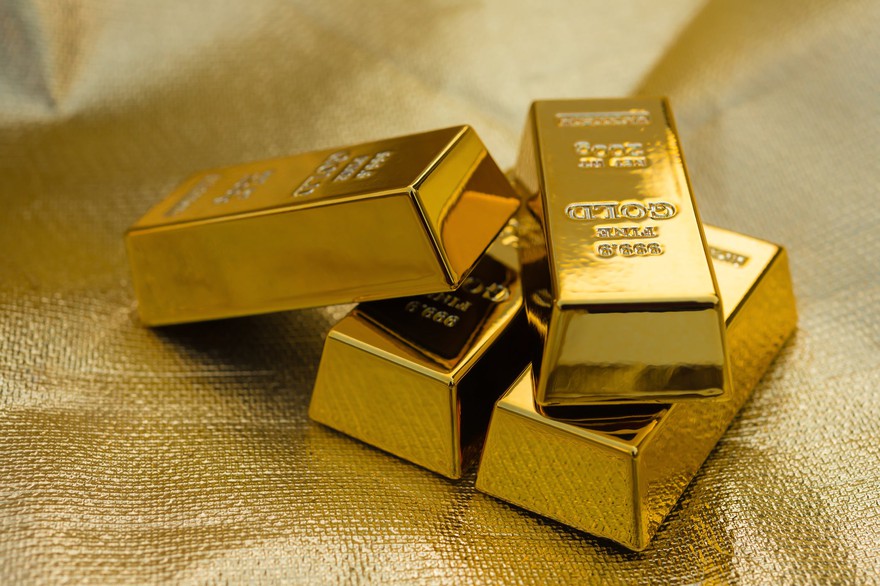Gold exchange-traded funds (ETFs) are funds that hold physical gold or gold mining stocks. They are one of many ways to invest in gold. Gold ETFs are an easy way to gain instant exposure to the gold market, making them ideal for anyone seeking to invest in gold.

Gold ETFs fall into two basic categories:
- Those that own physical gold.
- Those that own gold mining stocks.
Here's a closer look at the top gold ETF options.
What to look for in the best gold ETFs
Investors considering an ETF focused on gold should look for the following characteristics:
- Large size: The ETF should have at least $200 million of assets under management (AUM). A larger size makes the ETF less likely to fall prey to market manipulation or trade at a significant premium to its net asset value.
- Reasonable expense ratio: Look for an expense ratio of less than 1%. Any expense ratio of more than 1.5% is considered excessive.
- Non-leveraged ETFs: A leveraged ETF borrows money or uses derivatives, such as options and futures contracts, to magnify its returns. These carry much higher risk, and leverage in a down market can amplify losses.
Assets Under Management (AUM)
With those criteria in mind, here are some of the best gold ETFs.
Top gold ETFs
The best gold ETFs are:
Here's a closer look at each of these top gold ETFs.
1. SPDR Gold Trust

NYSEMKT: GLD
Key Data Points
SPDR Gold Trust (GLD -0.65%) is the largest and most liquid gold ETF with over $125 billion in AUM in late 2025 (more than double the AUM of iShares Gold Trust). It's the gold standard for investors seeking direct exposure to the price of the yellow metal. The ETF's sole asset is gold bullion, which it stores in secure vaults.
Investors pay a premium for this leading gold ETF. It has a higher expense ratio than other ETFs that own physical gold bullion at 0.4%.
However, it's still relatively cheaper than shipping, insuring, and storing gold bars and coins, especially when you factor in its liquidity. Its large size makes it a favorite of institutional investors, such as pension funds that use it to hedge against inflation and other risk factors.
2. iShares Gold Trust

NYSEMKT: IAU
Key Data Points
iShares Gold Trust (IAU -0.65%) is almost identical to SPDR Gold Shares, making it another great means of investing directly in gold. It boasts a lower expense ratio than its larger rival (0.25%), making it an even lower-cost way to gain upside exposure to the price of gold.
Owning shares in this ETF is a great proxy for owning physical gold without the hassle and expense of storing or insuring bars and coins. The ETF handles these items, storing its bullion in the London branch of JPMorgan Chase (JPM +0.59%). Overall, this gold ETF has done an excellent job of tracking the price of gold, with only a minor underperformance due to its expense ratio.
3. VanEck Vectors Gold Miners ETF

NYSEMKT: GDX
Key Data Points

NYSEMKT: GDXJ
Key Data Points
5. Franklin Responsibly Sourced Gold ETF

NYSEMKT: FGDL
Key Data Points
6. Goldman Sachs Physical Gold ETF

NYSEMKT: AAAU
Key Data Points

NYSEMKT: SGOL
Key Data Points
Pros and cons of investing in gold ETFs
Investing in gold ETFs has its share of benefits and drawbacks. Some pros of investing in gold ETFs include:
- Lower risk: Investing in a gold ETF is less risky compared to buying physical gold and storing it at your home, where it could get stolen, or investing in individual gold stocks.
- Easy access: Gold ETFs make it easy to invest in physical gold or broadly in gold mining stocks.
- Passive investments: Gold ETFs are passive investments. You don't need to go buy gold and a safe to store it in or manage a portfolio of gold mining stocks.
However, investing in gold ETFs isn't without its drawbacks, which include:
- Potential for underperformance: A gold stock ETF could potentially underperform the price of gold or the top gold mining stocks.
- No physical possession: While gold ETFs own physical gold, you wouldn't have physical possession of the gold if you needed it during an extreme emergency situation.
Finding the best gold ETF for your portfolio
Gold ETFs allow investors to speculate on gold prices without buying physical gold. The benefit of owning a gold mining company ETF over a gold price ETF is that it can generate higher returns.
Gold miners can use the cash flow they earn from producing gold to expand production, repay debt, make dividend payments, and repurchase shares. Those investments and shareholder returns position gold mining companies to potentially deliver higher total returns than the price gains of gold over the long term.










